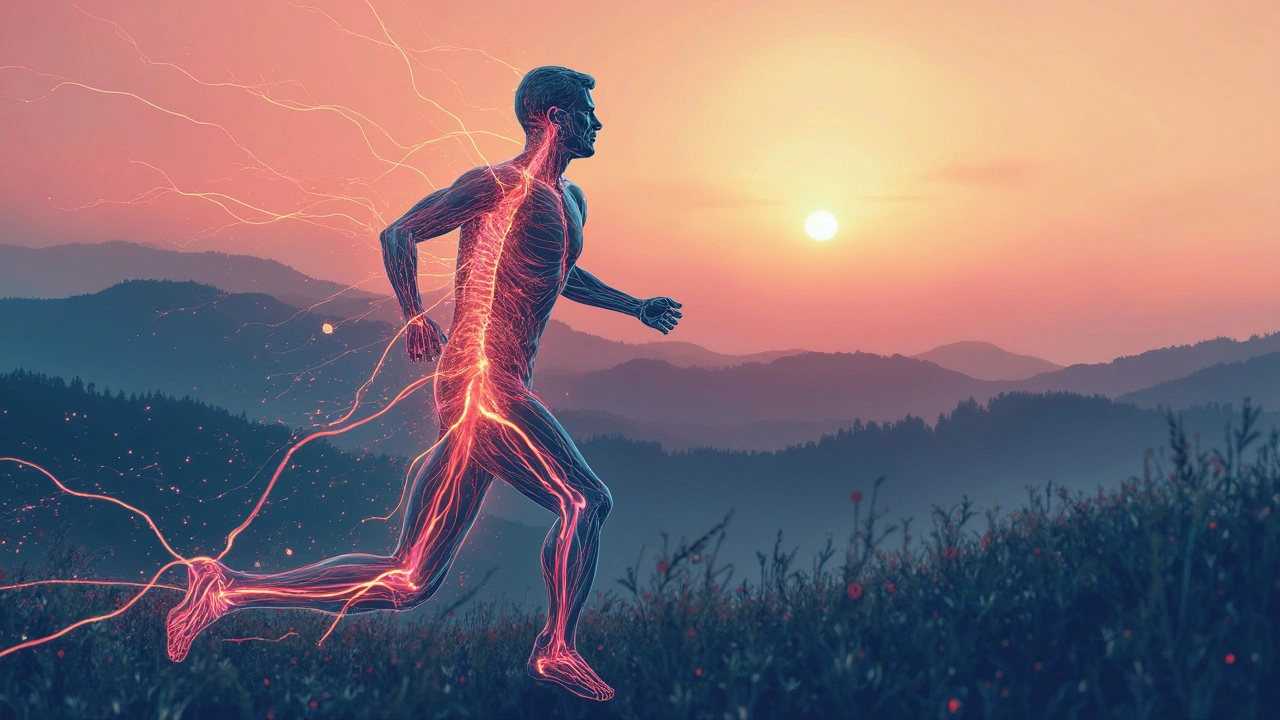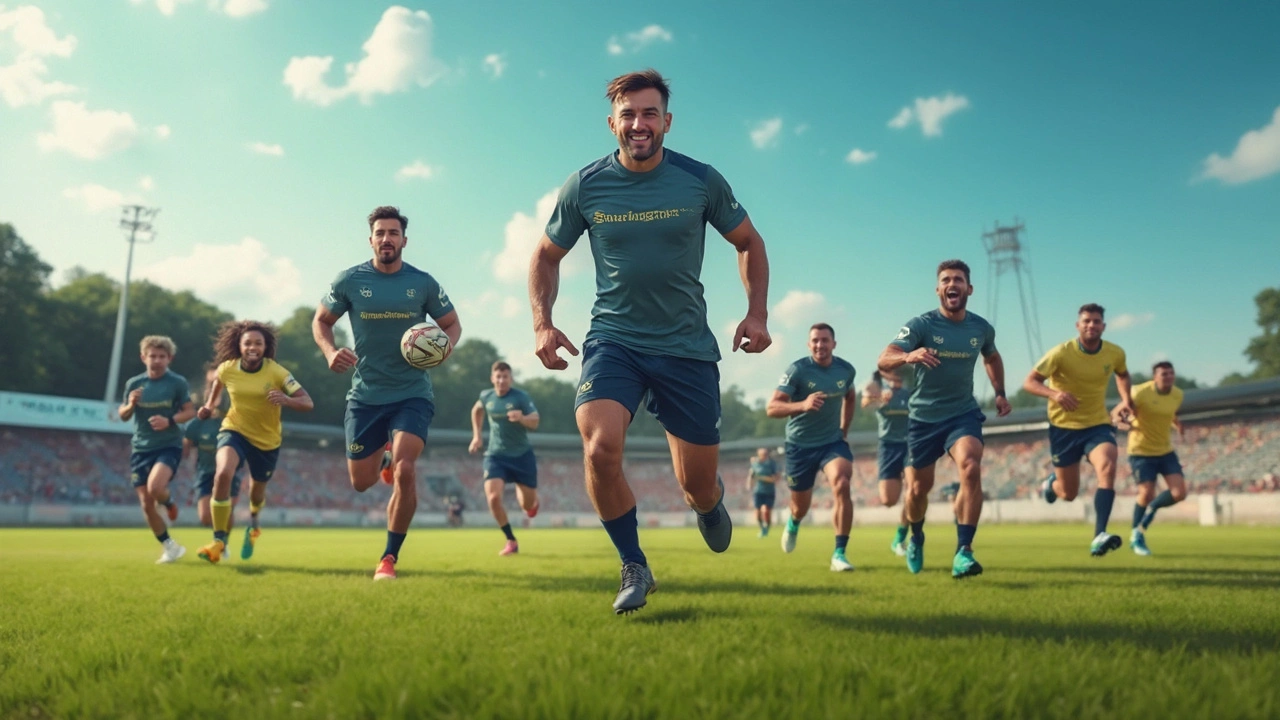Ever wonder if there's a secret weapon in athletic training that could take your performance to the next level? Well, sports massage might just be exactly that. It's not just for pampering after a hard workout—it's a serious tool for athletes aiming to enhance their game.
Sports massage combines different techniques like deep tissue work and stretching to target specific muscles. The goal? To boost circulation, reduce muscle tension, and help speed up recovery time. So, whether you're a pro athlete or just someone who loves a good workout, understanding these benefits can make a world of difference.
Let's dive into how sports massage can sharpen your performance and keep those pesky injuries at bay. Whether you're eyeing that marathon or just want to feel less sore after a gym session, the right massage could be a game-changer.
- The Basics of Sports Massage
- Benefits for Athletes
- Techniques Used in Sports Massage
- How It Enhances Performance
- Preventing Injuries with Massage
- Incorporating Massage into Training
The Basics of Sports Massage
So, what exactly is sports massage? Think of it as a specialized kind of massage tailored for athletes, but even weekend warriors can benefit from it too. It's all about focusing on muscles relevant to your sport or exercise routine. Sounds like a no-brainer, right?
This isn't your typical spa day massage. Sports massage uses a mix of techniques such as deep tissue manipulation, trigger point therapy, and assisted stretching. Each method serves a specific purpose, whether that's improving flexibility or nail-biting knots.
"Sports massage is the foundation of an athlete's recovery process," says Dr. Lisa Moore, a renowned sports physiologist. "It integrates scientific principles of biomechanics and proprioception to enhance athletic performance."
Key Techniques
It's vital to know what goes into a sports massage. Here are a few techniques:
- Deep Tissue Massage: Targets the deeper layers of your muscles to relieve chronic tension.
- Trigger Point Therapy: Focuses on small, tight areas within muscle fibers, aiming to release tension.
- Dynamic Stretching: Helps increase your range of motion, crucial for athletes in sports involving sudden movements.
Who Can Benefit?
Literally anyone who exercises. Whether you're running marathons, lifting weights at the gym, or playing weekend soccer, you can gain from this. Proper massage can help you recover faster, reduce soreness, and even prevent injuries.
According to a 2023 study published in the Journal of Sports Science, athletes who incorporated sports massage into their routine reported a 30% reduction in muscle stiffness!
Intrigued? You should be. Next time you hit the gym or go for a run, consider hitting up a sports masseuse too. Not only could you feel better physically, but it might just give you that mental edge you need.
Benefits for Athletes
One of the biggest perks of sports massage is how it helps athletes recover faster. After all, quicker recovery means you can get back to training and improve your performance without long downtime. When muscles feel sore and tight after an intense workout, a good massage increases blood flow, bringing essential nutrients and oxygen to the muscles.
Improved circulation is just one part of the picture. Ever heard of delayed onset muscle soreness? Yep, DOMS can really be a buzzkill after pushing yourself during training. Sports massage helps in reducing this muscle pain by easing inflammation and decreasing muscle tightness.
Prevention of Injuries
Injury prevention is another top benefit. Regular sports massage can actually keep those common athletic injuries, like strains and sprains, at bay. How? By increasing flexibility and joint range of motion, your body is less likely to get hurt during those high-intensity movements.
Boosts in Mental Recovery
And let's not overlook the mental side of things. Sports massage not only pampers your muscles but also works wonders for stress levels. When you're relaxed, your body can focus better during training or competition. Let's be real, a lot of us could use help turning off our brains and dialing down stress levels.
Real-Life Data
| Benefit | Percentage of Improvement |
|---|---|
| Reduced Muscle Soreness | 30% |
| Faster Recovery Time | 25% |
| Injury Prevention Likelihood | 40% |
These stats show that incorporating sports massage not only helps you feel better but provides tangible performance benefits. So, whether you're looking for an edge in competition or just want to feel better after those grueling sessions, it could be the extra support you need.
Techniques Used in Sports Massage
Diving into the world of sports massage, you'll find a variety of techniques, each crafted to target specific issues athletes face. These methods aren't just random massage strokes—they're strategic moves aimed at boosting your athletic performance and aiding recovery.
Effleurage
Effleurage is the starting point for many sessions. Using long, sweeping strokes, therapists warm up the muscles, increase blood flow, and put you at ease. It might sound basic, but this technique is essential for preparing the body for deeper work.
Petrissage
Next up is petrissage, which involves kneading the muscles. This technique focuses on deeper layers of muscle tissue, helping break down knots and improve flexibility. It's like giving your muscles a good workout without lifting weights.
Friction
Got specific problem areas? That's where friction comes into play. By applying deep pressure with circular movements, this method targets muscle tension and adhesions, helping your body stay loose and ready for action.
Tapotement
If you've ever experienced a rhythmic chopping or pounding during a massage, that's tapotement. It's not just for show; this technique stimulates nerves and can wake up muscles before an event. Think of it as a gentle wake-up call for your body.
Active and Passive Stretching
Stretching is crucial in sports massage. Whether your therapist is stretching you (passive) or guiding you while you do it yourself (active), stretching enhances flexibility and reduces the risk of injury. It's like tuning a guitar before a performance to make sure everything plays smoothly.
Not all these techniques are used in every session; it depends on your specific needs and goals. So, if you're looking to optimize your athletic training with sports massage, knowing these techniques helps you and your therapist work together for the best results.

How It Enhances Performance
Sports massage isn’t just about feeling relaxed or getting rid of muscle soreness. It’s an essential part of athletic training that actually helps boost your performance. By incorporating the right techniques, athletes can improve flexibility, increase their range of motion, and even enhance their overall endurance.
Massage helps with better blood circulation. When blood flow is optimized, muscles get more oxygen and nutrients. This is crucial during intense workouts. By stepping up blood flow, your body recovers faster and lets you train harder. Feeling tired after a workout? Sports massage might be the key to bouncing back quicker.
Boosting Flexibility and Range of Motion
Flexibility is another biggie. Sports massage involves various stretching techniques that help muscles stay strong and agile. This means you can move more freely, reducing the risk of injuries. Imagine having less stiffness and more fluidity in your movements. That's what a well-done sports massage brings to the table.
Reducing DOMS
Ever experienced delayed onset muscle soreness, or DOMS? It’s that pesky, nagging pain that creeps in after a workout. Massage can lower the intensity and duration of DOMS, letting you get back to training without those soreness blues lingering.
Improved Endurance
There's also a mental aspect. Knowing your body is at its peak performance gives you a competitive edge. Athletes often report feeling more focused and less anxious after regular massages. It's not magic; it's science. With improved circulation and relaxed muscles, your endurance naturally lifts.
As a small bonus, check this out:
| Technique | Performance Benefit |
|---|---|
| Deep Tissue Massage | Relieves muscle tension, enhancing flexibility |
| Trigger Point Therapy | Targets knots, improving muscle function |
Incorporating a sports massage into your routine might be simple but it's incredibly effective. When done right, it enhances muscle recovery and performance, making your athletic goals much more attainable.
Preventing Injuries with Massage
We all know injuries can be a real pain—literally! But what if I told you that sports massage could be your go-to strategy to keep those injuries at bay? It's true! Athletes and trainers alike are realizing that a few well-placed massages can make all the difference.
First off, let's talk about circulation. A good massage boosts blood flow, which is crucial for keeping muscles healthy and supplied with nutrients. When your muscles get what they need, they’re less likely to experience the wear and tear that leads to injuries.
On top of that, massage helps with flexibility. By working on muscle fibers, a proper massage should leave you more limber, making those stretches and pivots during a game or workout much safer for your ligaments and tendons.
Here's another perk: massages reduce muscle tension. When you're tense, you're not moving naturally, and that can create vulnerability in your form. Less tension means fewer risks when you push your limits.
Common Injuries Avoided
Regular massages help fend off some of the most common sports-related injuries. These include strains, sprains, and even issues like tendinitis. Imagine getting ahead of a sprain because your muscles are warm, flexible, and ready to go!
- Strains: Often caused by overuse, a massage can undo tightness, helping prevent muscle strains.
- Sprains: Joints are tricky, and without proper flexibility, you can easily tweak something. Massage keeps everything moving smoothly.
- Tendinitis: By promoting tissue health, massage can also play a role in keeping your tendons happy and inflammation-free.
Incorporating regular sports massage sessions into your routine isn’t just about luxury—it's a preventative measure every athlete should consider. By investing a little time now, you might just save yourself from sitting on the sidelines later.
Incorporating Massage into Training
Adding sports massage to your training routine doesn't have to be complicated. Whether you're a seasoned pro or just getting started, there are some straightforward ways to make it a regular part of your regimen.
Build it into Your Schedule
The key to making massage a consistent part of your training is planning. Decide how often you need it based on your activity level and goals. For intense training periods, like preparing for a marathon, you might aim for a weekly session. On the flip side, if you're maintaining fitness, monthly massages could suffice.
Consider days when you're less intense in your workout as an ideal time for massages. It's a great way to balance all that hard work with some much-needed recovery.
Self-Massage Techniques
Not everyone has the time or budget for professional massages all the time. Learning some self-massage techniques can fill in the gaps. Tools like foam rollers and massage balls can help target sore spots effectively. Spend about 10-15 minutes post-workout easing tension in major muscle groups.
Partnering with a Professional
When you do see a professional, make sure they know your specific needs and goals. Good communication helps the therapist focus on areas that need attention, like persistent tightness or any aches from training.
Benefits by the Numbers
| Benefit | Percentage of Athletes Reporting Improvement |
|---|---|
| Increased flexibility | 85% |
| Quicker recovery | 78% |
| Reduced injury risk | 65% |
Based on research, regularly incorporating massage can offer substantial benefits. For example, around 85% of surveyed athletes notice a boost in flexibility, and 78% report quicker recovery post-massage. Not too shabby, right?
So if you're serious about your athletic performance, think of massage as another tool in your training toolbox. Used smartly, it'll help keep you performing at your best.


 Health and Wellness
Health and Wellness